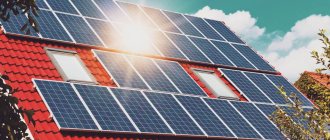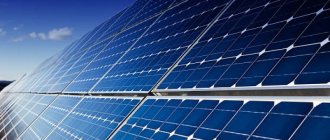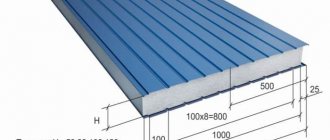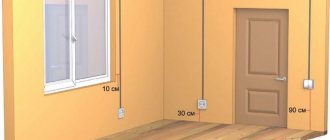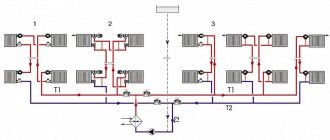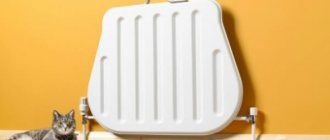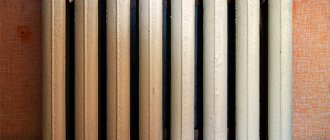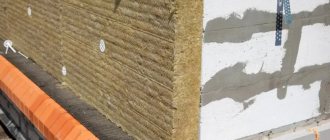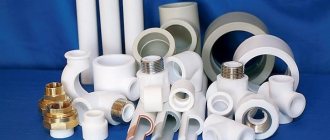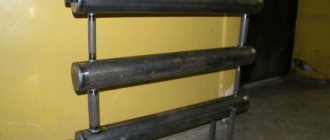It is difficult to imagine modern life without electricity. For urban conditions, an uninterrupted supply of electricity is an ordinary and familiar thing. Many city residents have a summer cottage with a house for living or recreation. I would really like to have city comfort in nature. Many dacha and soda associations have already installed electric lines. But suburban electricity is a fickle and unpredictable thing. It may disappear for several days. And for the dacha, solar panels are a good solution to this problem. Not everyone is still familiar with this type of electricity, but many have heard of it.
Description
Of course, the solar panel is not the only element in a home power plant. This is a tandem of several devices and components that will work together to convert the sun's energy into electricity.
But such a power plant produces no noise at all, no harmful emissions into the atmosphere, and the resulting electricity is absolutely free. With the modern development of solar panel production, the service life is from 25 to 30 years.
But, given the many nuances when organizing a home solar power plant, you need to think carefully about the feasibility of this undoubtedly useful enterprise.
FAQ
Is it possible to operate an autonomous system without batteries?
Since generation occurs intermittently, a storage device in the system is required. You can use not electrochemical, but other options, for example, a hydraulic accumulator. But, as a rule, its creation will cost much more and is associated with implementation difficulties.
Is it possible to increase the efficiency of panels using rotating sun tracking systems?
Of course, but they significantly complicate and increase the cost of the system.
Can serviceable car batteries be installed in the system?
It is possible, but they have the same problems as with traction ones - they require a separate room and conditions that comply with safety rules. In addition, they do not tolerate discharge at low currents well, which significantly reduces their service life.
How often should panel surfaces be washed?
As a rule, manufacturers do not set the frequency of such maintenance; they claim that natural precipitation is sufficient to keep surfaces clean. But it won’t hurt to water the panels with a hose 2-4 times a year.
Which scheme is more profitable to use?
The most effective is considered to be a hybrid system, which allows for uninterrupted power supply with a minimum payment to electricity suppliers.
Is it worth using solar panels for a private home in the Middle Zone?
Based on the insolation indicators, we can conclude that in such an area solar power plants are quite justified. Naturally, in general it will cost a little more, but it pays for itself in just 3-5 years of operation.
Understanding how solar panels work
We will not fully describe the entire procedure for converting solar energy into electrical energy within the framework of this topic. But we need to talk about some points.
The main element from which solar panels are made is silicon. When solar flows hit the silicon surface, they knock out free electrons from one edge of the wafer, which move to free spaces on the back side of the panel. This is how electric current is generated.
All that remains is to assemble it and send it along the wires to where it is so needed.
One such plate can charge a small flashlight. Well, it’s clear that in order to cover the electricity needs for the necessary equipment of a country house, more such plates are needed.
Solar Panel Options
Today, the industry offers three types of silicon panels.
Monocrystalline batteries
A distinctive feature is the square dark black photographic plates, directed along one side. The photo panel itself has beveled corners.
In clear and cloudless weather and if the panel is turned with the working side towards the sun, then the efficiency can reach 15–25%.
In gloomy weather, in the morning and evening hours, when there is no sun, the power drops to a minimum.
The efficiency is quite high - from 15% to 25%.
These panels work best when their working side faces the sun. In cloudy weather and in the morning/evening hours, the generated power is minimal.
Polycrystalline batteries
The plates are square in shape and have a characteristic dark blue color.
Compared to batteries made from monocrystals, these batteries are larger in area. Well suited for placement in large areas.
For them, weather conditions are no longer so important. They can also work in cloudy weather with an efficiency of 12–15%.
Amorphous silicon wafers
Amorphous flexible silicon wafers are the cheapest type of solar wafers. It looks like a flexible film with blue inclusions of photocells.
Work well in diffuse sunlight. Ideal for use in areas with constant cloudiness.
With a low efficiency of 6%, they have an unpleasant feature - silicon coating can quickly burn out in direct sunlight.
Installation
The panels can be mounted almost any way - vertically, horizontally, or at an angle. However, it should be taken into account that the modules provide maximum efficiency when the sun's rays fall perpendicularly on the working surface. At the same time, it is necessary to ensure the maximum irradiation time.
Here are some installation recommendations:
- Orient the photodetectors to the south.
- Place the panels at an angle equal to the latitude of the area.
- Change (if possible) the angle of inclination by 20% - increase in winter and decrease in summer.
Care should also be taken that during the entire daylight hours the modules are not shaded by trees on the site or other buildings. In this case, it will be possible to ensure maximum generation power. This is especially critical for monocrystalline batteries, the efficiency of which is significantly reduced in scattered light.
Recommendations for selection
So, you need a solar battery for your dacha. What is important or what to pay attention to in order to organize a solar power plant?
- Solar panels. The main purpose is to transform solar energy into electrical energy. The power of your home power plant directly depends on their quantity. It is clear that the larger it is, the wider the possibilities for this battery. Typically, for a summer residence, users purchase sets of 2–4 modules, each with a power of 200 W. There are craftsmen who assemble a battery from individual elements and components. This panel will also work great. True, this hobby will take a lot of time. So it’s better to order and buy ready-made modules. This way you can save time, and there is a guarantee for the purchased items.
- Inverter. Converts direct current from the panels into the usual alternating current, voltage 220 V.
- Solar battery - necessary for storing excess solar energy. They can also significantly help in case of an emergency power outage or lack of sun. The accumulated excess energy, in this case, is transferred to the inverter. The number of batteries may vary depending on the number of solar cells
- Wires, connectors of various types and connectors are designed to connect all elements into a single network.
Usually, when a person wants to use solar panels at the dacha, all the elements can be purchased as a set in specialized stores or ordered a set on the Internet.
There are already ready-made kits. For example, if the daily need for electricity does not exceed 5 kW, there is a “Country House” kit. This is a good option for country houses or country houses. It is during the summer season from March to October that your house can operate exclusively using solar energy. Of course, kits of this type can also work in winter, but as an addition to the central power grid.
Technical specifications: what to look for
Certified solar panels always indicate operating current and voltage, as well as open-circuit voltage and short-circuit current. It is worth considering that all parameters are usually indicated for a temperature of +25°C. On a sunny day on the roof, the battery heats up to temperatures significantly higher than this figure. This explains the presence of higher operating voltage.
Example of technical characteristics of solar panels for a home
Also pay attention to the open circuit voltage. In normal batteries it is about 22 V. And everything would be fine, but if you carry out work on the equipment without disconnecting the solar panels, the open circuit voltage will damage the inverter or other connected equipment that is not designed for such a voltage. Therefore, during any work - switching wires, connecting/disconnecting batteries, etc. etc. - the first thing you should do is disconnect the solar panels (remove the terminals) . Having gone through the circuit, you connect them last. This procedure will save you a lot of nerves (and money).
Standard kits
The modern market offers various solar panels for dachas from foreign manufacturers, as well as Russian-made solar panels, based on your family budget and the complexity of the tasks.
- Economy option. If you plan to regularly use solar panels to periodically charge power supplies for cordless tools, laptops and smartphones, a power of 100–200 W will be enough for you. The kit includes one 12-volt 100 Ah battery, a PWM controller and an inverter.
- Standard. During the summer season from March to November at the dacha there will be:
- LED lightening,
charging laptops and smartphones,
- refrigerator and TV work.
- Maxi. In the absence of a full power supply from central power grids, the maximum configuration can replace it.
- Panel with a capacity of 1.5–3.0 kW/h;
- MMRT controller (48 V);
- 48 volt battery with a capacity of 400 A/h;
- Sine wave 10 kW UPS.
All this can be provided by a panel with a power of 300–600 W. MPRT controller for 24 volts, 1 kilowatt inverter and two batteries of 200 A/h.
Results: are there prospects for the development of an alternative energy source?
Today, many countries are developing various projects: connecting panels in outer space, installing road surfaces. By the way, a bicycle path has already been created and is operating, which produces 9,800 kW/h per year. Such a project was implemented in Holland. Its effectiveness has already been confirmed in practice. To prevent damage to the battery, a 1 cm thick (transparent) coating is provided. In addition, the developers plan to create an alternative power source of small dimensions, characterized by high performance.
Why do you need an inverter?
Different versions of solar panels produce direct electric current with a voltage of 12, 24, 48 volts. But household electrical appliances operate on alternating electric current.
The inverter's job is to convert direct current from the batteries into alternating current.
The inverter is capable of operating in a wide range of output voltages from 150 to 1000 V.
The power of the inverter affects its price. It varies over a wide range. From a couple of thousand rubles, for the most budget models, to tens of thousands, for the most powerful ones.
Calculation of energy consumption and payback
As we can see, the question of how to choose a solar battery is far from idle.
Let’s compile for ourselves a small table of all the expected consumers of electricity in your country house.
In the table you need to collect:
- all devices that consume electricity,
- their existing or expected number in the whole house,
- power of each device,
- operating time in hours and power consumption of the device in kW.
The second table makes it possible to estimate the costs that must be paid for the purchase of equipment.
It is very important to calculate the full load of an autonomous inverter while simultaneously turning on all electricity consumers in your home.
We summarize the obtained indicators in the right column. The result is the power of your future inverter for your network.
Let's not forget about peak voltage surges when starting some electrical equipment, for example, such as an electric watering pump. If the future inverter's peak load is lower than your total surge of all devices connected to the home network, then your inverter may simply not be able to withstand it and burn out.
Typical reviews
They can be divided into two groups: reviews of those who already use these devices and the opinions of everyone who is just studying the issue of autonomous power supply.
Most solar plant owners are satisfied with their choice. Having equipped their country house with them, they note the reliability, all-season use and efficiency of solar panels. Those thinking about purchasing express doubts about the economic feasibility, fearing the long payback period of the equipment.
We will express our thoughts on this topic. Taking into account the stable increase in the cost of electricity obtained from external networks, the use of a solar station cannot be called unprofitable. If we are talking about areas where power supply is completely absent or is characterized by frequent outages, then a solar power station is the only option.
Controller for solar panels.
So, we have looked at the role of solar panels and an inverter for a home solar power plant.
But there is one more unfamiliar device in the circuit - the controller.
First, let's say that controllers have two types of electrical signal modulation:
- PWM - pulse wide modulation (or PWM).
- MPPT (maximum power point tracking) or TMM.
The first ones are able to set multi-level battery charging, which includes:
- Filling the battery;
- Absorption of surplus;
- Charge current equalization;
- Maintaining charge level.
The second has a function for tracking the maximum power point. In principle, the functions remain the same, but this device is able to increase electricity production with the same set of solar panels without installing additional ones.
The devices are different and their prices are also very different.
If you have a couple of panels and are just interested in backup power for watching TV and lighting in the room, then a PWM controller is enough for this. Budget models from 1000 to 1300 rubles will support a voltage of 12/24 V with a maximum output current of 10 A.
If you have a more powerful solar power plant, then you certainly cannot do without an MPPT controller. The choice of devices of this type is very large and the lower price level for them is around 7,000 rubles.
Connecting multi-directional elements
When using a sequential solar panel installation scheme, in order not to reduce the efficiency of the devices, all panels of the common circuit should be placed at the same angle and on the same plane.
If the panels are located in different planes, this may lead to the fact that the closest or more illuminated one will work more powerfully than those located a little further away.
This means that the near panel will generate electricity, some of which will be released to heat the distant panels. And the reason lies in the fact that current flows along the path of least resistance. To minimize losses, it is better to use a separate controller for each panel.
The main requirements when using the controller are the power of the connected panels over 1 kW and the distance between the batteries at a sufficiently large distance
The issue can also be resolved by installing cut-off diodes. They are placed inside between the plates. Thanks to this, while delivering maximum power, the plates do not overheat.
The voltage drop in the connections, as well as the wires themselves, of the low-voltage part of the system is also important.
Table of discrepancy between the transmitted power and the wire cross-section, indicating in red the parameters at which there is a risk of strong fire heating
An example is the fact that on a meter piece of cable with a cross section of 4 mm2, when a current of 80A (voltage 12 V) passes, the values drop by 3.19%, which is 30.6 W. When twisting is activated, the voltage drop can vary from 0.1 to 0.3 V.
Popular manufacturers
The modern market offers a large selection of solar panels for summer cottages.
There are many manufacturers and often the panels themselves differ little from each other. Except for the trademark and packaging. The photocells themselves are usually made in China.
Yingli Solar Green Energy Holding
We can say that this Chinese company is practically the world leader in the production of solar modules. 10% of all panels in the world are produced by Yingli Solar. Panels from this company were sold all over the world. They are installed in many (about 90) countries. Not only standard panels are in production, but there are also double-sided ones. There are also integrated options for roofs of cars, boats and so on.
We advise you to read: how to make a solar panel with your own hands, detailed instructions.
This solar panel is time-tested, has world-class quality and a well-deserved international reputation.
Sanyo
Consumer electronics from the Japanese corporation Sanyo are well known to Russian residents.
Back in 1975, the company launched the production of solar cells based on amorphous silicon. Since that time, the company has worked hard on research in this area. Now Sanyo solar modules are known for their quality and high reliability during long-term operation.
First Solar
The founder of the American company is scientist Harold McMaster, who devoted his life to researching the use of solar energy in everyday life.
Now the company is one of the three world leaders in the production of solar panels. The main activity of First Solar is the development and production of ready-made solar power plants.
Hanwha SolarOne
Hanwha Solar One is one of the top ten solar photovoltaic kit manufacturers. The company's head office is located in Seoul, and industrial production is located in South Korea and China. The company produces:
- Photovoltaic cells;
- Solar modules;
- Solar systems;
- Large solar power plants.
All components are produced under deep product quality control based on cutting-edge technologies.
Real Solar
If you decide to electrify your dacha by installing a home autonomous solar system, then you can contact the St. Petersburg company Real Solar.
They specialize in the design, installation and maintenance of autonomous power supply systems specifically for country houses, houses and various types of cottages.
For owners of a small country house, power plants with a 3-kilowatt capacity can be installed. They can easily cope with continuous autonomous power supply around the clock. Refrigerators, televisions, submersible and watering pumps, laptops, power tools will be powered by Real Solar batteries.
Helios House
The engineers of Helios House LLC focus their work on designing solar systems that can be deployed at any facility. The company’s specialists can also organize the supply, commissioning and further maintenance of solar power plants, which can provide electricity to:
- Up to 4 energy-saving light bulbs;
- Average “A” class refrigerator;
- TV;
- Watering pump.
The assortment includes kits both for the summer season - April/October, and kits that can provide quite comfortable accommodation in the autumn-winter period.
What does the Energovolt Trademark offer?
has been operating in the solar panel market since 2014, offering its clients a full range of services for the design, sale and installation of equipment of any complexity. The most important component of the battery system - mono and polycrystalline solar panels with a power of 30 to 500 Watts - is produced by Clean Energy independently - releasing them under the Energovolt brand.
Price and reliability
Energovolt solar panels combine competitive prices and high reliability. This is achieved thanks to the operation of automatic lines, the use of components from Trina Solar and GCL (a company from the TOP-5 industry leaders) and the location of production in China.
On a note! The efficiency of Energovolt solar panels is up to 21.5%, which is one of the best indicators among industry leaders today.
Manual labor in production is used mainly only on the packaging line of finished products and in testing laboratories. Soldering of cells and similar critical operations are performed fully automatically. This allows the Energovolt brand to give a ten-year guarantee for its products and declare the service life of solar panels for 25 years, after which the generated current power will be no less than 80% of the rated one.
Advantages and disadvantages of solar panels
Now let's talk about the pros and cons of home solar systems.
pros
- This is an inexhaustible and all-available source of energy. The sun is always there and is not going to disappear anytime soon. If the sun completely disappears, then no one in the world will be very concerned about where to find electricity.
- Compared to wind power generators, the panels are absolutely silent.
- The panels themselves are wear-resistant.
- Long (25–30 years) service life.
- Having installed such a system once, you will not have to worry about the fact that the electricity supplier will come and cut off your home’s electricity supply or that prices for services will suddenly rise.
- You can always increase the power of heliostation. Well, of course, the main issue here is the area. But in any case, the modularity of such systems allows you to add and power new panels to your system at any time.
- An important factor is savings. With an existing fixed connection, panels make it possible to reduce energy costs.
- Independence from centralized electricity supply. This is especially true in holiday villages, where the power is turned off suddenly and for a long time.
- You will become another person who really keeps the atmosphere clean - this, from an environmental point of view, is an absolutely clean device.
Flaws
It must be admitted that solar systems also have their disadvantages:
- Uninterrupted operation cannot be ensured. If solar activity is very high in summer, then in winter such systems are ineffective. Clouds and low clouds also affect the performance of these systems. Therefore, there is a need to duplicate the solar system with a traditional source of electricity or use hybrid solar panels. Do not forget about the area in which such systems will be used. Different areas have completely different solar activity. Therefore, the installation of solar cells should be adjusted to a greater extent taking into account the location of your dacha.
- The biggest disadvantage is the large initial financial costs. And the payback period is a rather controversial issue and is not completely clear.
- Low level of efficiency. Also a sore point. Only 120 W are removed from one square meter. This power is not enough even to run a laptop. Even the best panels have an efficiency of 15–20%.
- To work effectively, assistive technology is required. Batteries, inverter, controller. In addition, it is advisable to place all this equipment for the dacha in a separate room with good ventilation.
Of course, the main question is how expensive is it to set up such a power supply system, and is it even applicable to dacha conditions? From the experience of specialists, and simply owners of such systems, the entire structure can pay for itself within 5–7 years. This period is reduced by almost half in regions with high year-round solar activity. It is clear that little depends on the panels themselves. The main question is how much solar energy reaches the panels. Here, systems with rotating panels are the winner. The more sun that hits the panels, the faster the battery will pay for itself.
On the other hand, we must take into account that the global industry does not stand still, but is constantly developing. This leads to a steady trend towards reducing the cost of such structures.
So over time, such a purchase is a good investment for those summer residents who want and can afford to save on electricity bills.
Installation features
Installing solar panels is a technically simple process, but very responsible. The area and weight of powerful panels are quite large, so they require reliable fastening using guides and special fasteners. In addition, it is necessary to provide easy access to the batteries on the roof for cleaning from dust and snow.
Energy production directly depends on the angle at which the sun's rays fall on the photocells. Therefore, solar panels are not fixed in one position, but are mounted on rotating devices.
Recommended tilt angles for solar panels
There are two main positions of solar panels: summer and winter. By changing the angle of inclination, maximum efficiency is obtained from the solar station.
